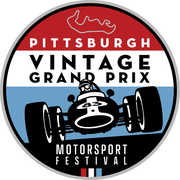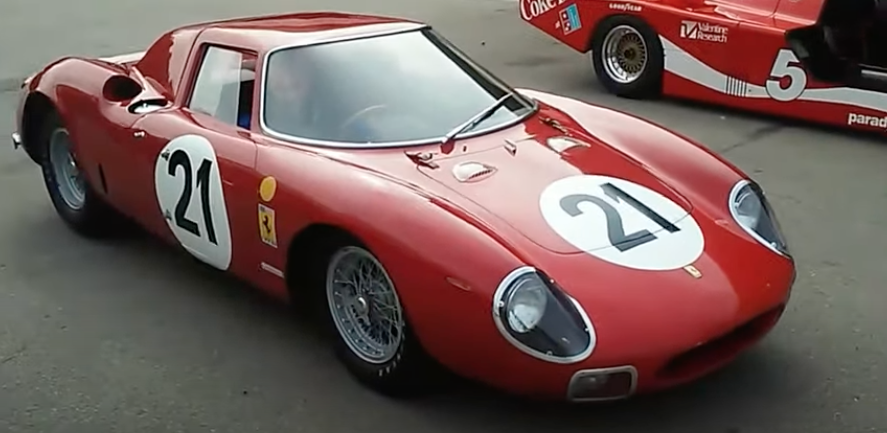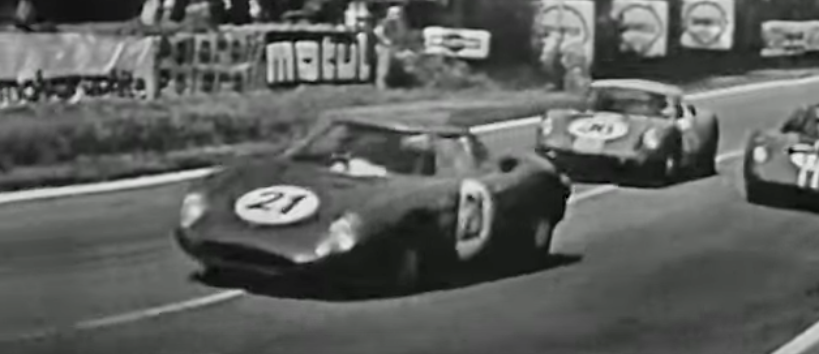|
by Bernard Martin The Pittsburgh Vintage Grand Prix (PVGP) is thrilled to announce that Luigi Chinetti Jr. will be the distinguished guest speaker at the Cortile Italian Car Show luncheon on Saturday, August 3. Attendees will have the unique opportunity to hear Chinetti Jr. share his captivating experiences from the 1949 Le Mans, a race that marked a significant moment in automotive history.
As a young man, Luigi Chinetti Jr. witnessed the first Le Mans race held after World War II, an event that not only revived the legendary circuit but also set the stage for Ferrari’s legacy in motorsports. His father, Luigi Chinetti Sr., secured his third victory in this historic race, driving the Ferrari 166 MM Barchetta. This victory was instramental in propelling Ferrari onto the world stage, despite initial reluctance from Enzo Ferrari himself. The 1949 24 Hours of Le Mans was the first race held at the Circuit de la Sarthe since 1939, due to the interruption caused by World War II. The event symbolized the revival of endurance racing in Europe and marked a new era for motorsports. Luigi Chinetti Sr., co-driving with Peter Mitchell-Thomson, 2nd Baron Selsdon, clinched the win in the Ferrari 166 MM Barchetta. Luigi Chinetti Sr. drove for an astonishing 23 out of the 24 hours, showcasing his extraordinary endurance and skill. His determination and resilience were key factors in securing the victory for Ferrari. This victory was significant as it marked Ferrari’s first major international win, establishing the brand’s reputation in endurance racing. The Ferrari 166 MM Barchetta, with its sleek design and V12 engine, became an iconic model in automotive history. The car's performance at Le Mans showcased Ferrari's engineering prowess and set the stage for future successes. The race was not without its challenges. The Ferrari team faced stiff competition from other manufacturers, including Aston Martin and Delahaye. Despite mechanical issues and the grueling nature of the race, Chinetti’s expertise and the car’s reliability led them to triumph.According to several sources, Enzo Ferrari was initially hesitant about entering the 166 MM Barchetta in the race. However, Chinetti Sr. was instrumental in persuading Ferrari and orchestrating the car’s participation, which ultimately proved to be a game-changing decision for the company. The victory at Le Mans was a turning point for Ferrari, providing the company with invaluable publicity and solidifying its reputation as a leader in high-performance racing cars. This win helped Ferrari attract customers and establish a strong market presence, particularly in North America. Following the success at Le Mans, Luigi Chinetti Sr. played a crucial role in developing Ferrari’s North American dealer network. His efforts helped to popularize Ferrari in the United States, making the brand synonymous with luxury and performance. Join us for a Memorable Event The Cortile Italian Car Show luncheon promises to be an engaging and insightful event, offering enthusiasts a rare glimpse into the Chinetti family’s rich heritage and contributions to the world of motorsports. Don’t miss this chance to hear firsthand accounts of one of the most influential races in history and the story of how Ferrari’s legacy was shaped by the Chinetti family's passion and perseverance. Join us on August 3 at the Pittsburgh Vintage Grand Prix for a memorable afternoon with Luigi Chinetti Jr., celebrating the legacy of Ferrari and the enduring spirit of motorsport innovation.
0 Comments
NART (North American Racing Team) was a racing team that fielded Ferrari sports cars in various racing events, including the 24 Hours of Le Mans. The team was founded by Luigi Chinetti, a former Ferrari racing driver who had established a Ferrari dealership in New York City in the 1950s. NART's racing history at Le Mans began in 1958, when Chinetti and co-driver Olivier Gendebien won the race in a Ferrari 250 Testa Rossa. This was the first of four Le Mans victories for the team, which would go on to compete in the race over the next decade. In 1961, NART entered three Ferraris in the race, including a 250 GT SWB, a 250 GT California, and a 250 TRI/61. The 250 GT SWB driven by Gendebien and Phil Hill finished second overall, while the California driven by Bob Grossman and Glenn Roberts finished fifth overall. The team also won the GT class with the 250 GT California. In 1963, NART entered a Ferrari 250 GTO in the race, which was driven by Pedro Rodriguez and Jean Guichet. The car retired from the race due to engine problems, but it remains one of the most iconic NART Ferraris to have competed at Le Mans. NART's 1965 Le Mans victory with a 1964 Ferrari 250 LM was a significant moment in the team's racing history. The car, driven by Jochen Rindt, Masten Gregory and Ed Hugas (from Pittsburgh PA), completed 347 laps and secured the first and only overall victory for a Ferrari 250 LM at Le Mans. This was also the first overall win for an American team at Le Mans and the seventh overall win for Ferrari at the race. The victory remains one of the most iconic moments in NART's racing history and a testament to the team's success in the world of endurance racing. NART's final Le Mans victory came in 1972, when the team entered a Ferrari 365 GTB/4 Daytona in the GT class. The car was driven by Luigi Chinetti Jr., Bob Grossman, and Francois Migault, and it finished 9th overall and first in class. Overall, NART's racing history at Le Mans is a testament to the team's success in the world of sports car racing, and to the enduring legacy of the Ferrari brand at one of the most challenging and prestigious racing events in the world. Ferrari Quits LeMansFerrari's decision to quit Le Mans in the late 1970s was largely driven by changes in the rules and regulations of the race that made it less attractive to the company. In particular, new rules were introduced that favored the use of smaller engines with reduced fuel consumption, rather than the larger, high-performance engines that Ferrari was known for.
At the time, Ferrari was also facing financial difficulties and was struggling to compete with other manufacturers in Formula One and sports car racing. The company had also recently faced the loss of its founder, Enzo Ferrari, who passed away in 1988. These factors, combined with the changing regulations in Le Mans, led Ferrari to shift its focus to other racing series, such as Formula One and GT racing. Despite this, Ferrari has continued to be a dominant force in sports car racing and has won multiple championships in GT and endurance racing over the years. |
AtributionThis is a compilation of articles from a variety of sources and contributors. Attrition and sources are always provided at the top and/or the bottom of the posting. Archives
June 2024
Categories
All
|

The Pittsburgh Vintage Grand Prix Association is a federally registered 501c (3) non-profit organization with a mission to hold a world-class vintage automotive race event for charity.
Since 1983 this volunteer-driven event has raised over $6 million to benefit autistic and developmentally disabled individuals through the Autism Society of Pittsburgh and Allegheny Valley School. The Pittsburgh Vintage Grand Prix remains North America's largest vintage race event, the only one run on city streets, and the 8th largest car show in the World. |




 RSS Feed
RSS Feed